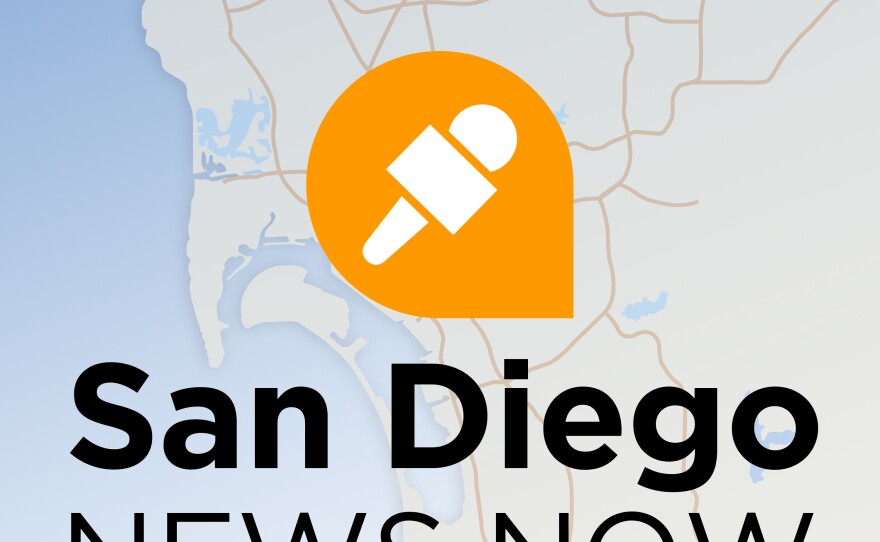San Diego Pride week kicked off Saturday with She Fest, a celebration of LGBTQ+ women and nonbinary and gender-nonconforming people.
Live bands filled the stage. Food trucks served vegan and Indian fusion fare. And hundreds of people perused booths set up by vendors and community groups.
“The vibe of She Fest is very much connecting with people,” said Kathie Moehlig, executive director of Trans Family Support Services. “There’s an entertainment factor, there’s a community-building factor and there’s an educational factor.”
San Diego Pride expects hundreds of thousands of people to attend the weeklong celebration, culminating in the Pride Festival this weekend.
But the good vibes have been tempered by a growing concern behind the scenes.
“What we're seeing, not just in San Diego but all over the country, is a rise in anti-LGBT sentiment,” said Fernando López, executive director of San Diego Pride. “At least a rise in vocal anti-LGBT sentiment.”
That’s translated into skyrocketing insurance costs for Pride organizations.
Insurance coverage is required for pretty much any large event. It helps cover the costs associated with a range of liabilities, from an attendee tripping over a curb to a mass shooting.
Though a number of factors influence the price of insurance, it mainly comes down to perceived risks — the greater the risk of an incident, the more insurance companies will charge for coverage. And right now, many insurers fear the growing threats against the LGBTQ+ community may translate into tragic real-world harms.
San Diego Pride organizers are well aware of the risks. In past years, the nonprofit purchased an extra layer of coverage — what the industry calls “excess insurance” — to cover liabilities stemming from major incidents.
Last year, the organization paid about $10,000 for the coverage. This year, the price tag jumped to $300,000.
“How could I budget for that year over year?” López said in a recent interview.

The hazards facing the LGBTQ+ community are numerous.
Hate crimes based on sexual orientation in California increased nearly 30% last year, according to a recent report from the state Department of Justice. Incidents against trans and gender non-conforming people jumped by more than 50%.
Far-right groups like the Proud Boys have organized in-person confrontations over drag events across the country. And just last month, authorities arrested a man for allegedly threatening to bomb and carry out a mass shooting at Nashville’s Pride event.
Bruce Smiley-Kaliff, vice president and senior underwriter at San Antonio-based Kaliff Insurance, said insurance companies are keenly aware of the risks.
“Pride events are being scrutinized in really unprecedented ways,” said Smiley-Kaliff, whose company specializes in coverage for large events, including dozens of Pride festivals.
He noted that insurance costs are going up for most outdoor events, including concerts, festivals and fairs. He cited several reasons. Attendees are more likely to file lawsuits over minor incidents, like a slip and fall injury. Insurance markets are also overburdened in general, due to a rise in costly claims tied to events like wildfires and hurricanes.
And there’s the growing threat of shootings and other mass casualty events. That’s a particular concern for Pride festivals.

“Carriers are terrified by very, very large events, and especially ones that could be deemed a little bit more risky when it comes to violence, or perceived violence and threats,” Smiley-Kaliff said.
Even Pride organizations that aren’t facing spikes in insurance rates are seeing other costs, like security, go up.
San Diego Pride ultimately went with a more basic insurance plan this year, because spending hundreds of thousands of dollars on extra insurance would’ve meant pulling funding from other essential programs.
“That's been the puzzle that we've been trying to solve,” López said. “How much risk do you want to take?”
Sacramento’s Pride festival had to raise its ticket prices for the first time in three decades, in part because its event insurance more than doubled in recent years.
“We got to a place where we couldn't just supplement additional costs with more sponsorships or more beverage sales,” said David Heitstuman, CEO of the Sacramento LGBT Community Center, which organizes the pride festival. “We had to raise the ticket prices.”
While the organization sets aside free tickets for low-income community members, Heitstuman fears increased entry fees could make the Pride festival less accessible at a time when the LGBTQ+ community needs it most.
-
Pride events are taking place across the country amid growing threats of violence against the LGBTQ+ community and an increasingly charged political environment, and one way that’s impacting Pride organizations’ bottom lines is with skyrocketing insurance costs. In other news, San Diego wants to crack down on companies that dig up city streets without properly fixing them after. Plus, San Diego residents are getting acquainted with the stinky, smelly part of their garbage, as organic recycling expands in the city.
-
Fentanyl has become one of the nation's defining drug crises — and San Diego is the trafficking epicenter for the drug.








